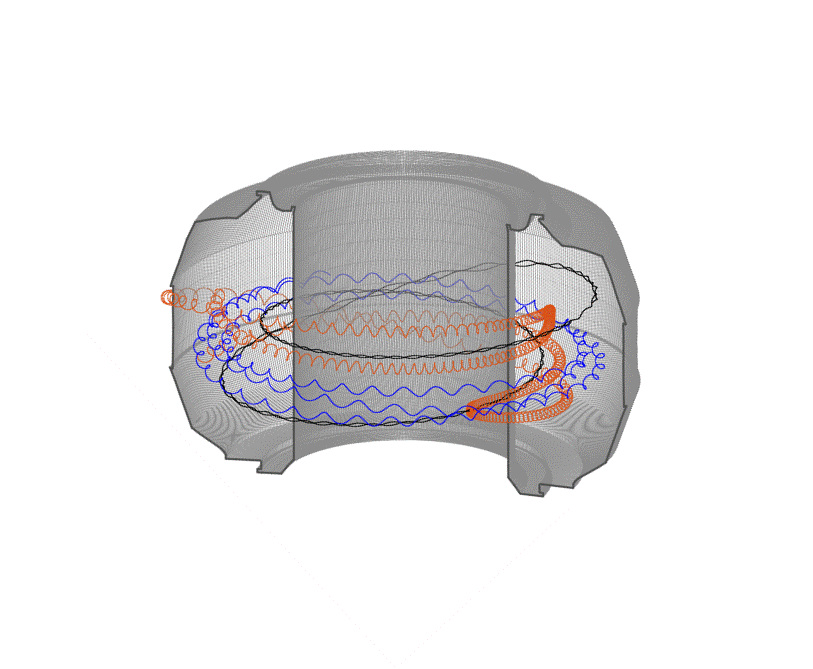
Filter News
Area of Research
- Advanced Manufacturing (6)
- Biology and Environment (36)
- Clean Energy (25)
- Climate and Environmental Systems (1)
- Computational Biology (1)
- Computational Engineering (1)
- Computer Science (4)
- Fusion and Fission (6)
- Fusion Energy (6)
- Isotopes (4)
- Materials (35)
- Materials for Computing (7)
- National Security (3)
- Neutron Science (28)
- Nuclear Science and Technology (5)
- Quantum information Science (3)
- Supercomputing (14)
- Transportation Systems (1)
News Type
News Topics
- (-) Big Data (25)
- (-) Biology (40)
- (-) Biomedical (22)
- (-) Composites (12)
- (-) Fusion (16)
- (-) Materials Science (47)
- (-) Neutron Science (36)
- (-) Polymers (14)
- (-) Quantum Science (12)
- 3-D Printing/Advanced Manufacturing (44)
- Advanced Reactors (15)
- Artificial Intelligence (20)
- Bioenergy (33)
- Biotechnology (7)
- Buildings (30)
- Chemical Sciences (20)
- Clean Water (20)
- Climate Change (40)
- Computer Science (53)
- Coronavirus (17)
- Critical Materials (14)
- Cybersecurity (9)
- Decarbonization (27)
- Energy Storage (45)
- Environment (83)
- Exascale Computing (4)
- Fossil Energy (1)
- Frontier (4)
- Grid (28)
- High-Performance Computing (20)
- Hydropower (8)
- Irradiation (2)
- Isotopes (17)
- ITER (4)
- Machine Learning (19)
- Materials (43)
- Mathematics (7)
- Mercury (7)
- Microscopy (20)
- Molten Salt (5)
- Nanotechnology (18)
- National Security (19)
- Net Zero (4)
- Nuclear Energy (34)
- Partnerships (2)
- Physics (20)
- Quantum Computing (5)
- Security (7)
- Simulation (12)
- Space Exploration (10)
- Statistics (1)
- Summit (8)
- Sustainable Energy (59)
- Transportation (48)
Media Contacts

Jon Poplawsky, a materials scientist at the Department of Energy’s Oak Ridge National Laboratory, develops and links advanced characterization techniques that improve our ability to see and understand atomic-scale features of diverse materials

Researchers used neutron scattering at Oak Ridge National Laboratory’s Spallation Neutron Source to investigate bizarre magnetic behavior, believed to be a possible quantum spin liquid rarely found in a three-dimensional material. QSLs are exotic states of matter where magnetism continues to fluctuate at low temperatures instead of “freezing” into aligned north and south poles as with traditional magnets.
![2018-P07635 BL-6 user - Univ of Guelph-6004R_sm[2].jpg 2018-P07635 BL-6 user - Univ of Guelph-6004R_sm[2].jpg](/sites/default/files/styles/list_page_thumbnail/public/2018-P07635%20BL-6%20user%20-%20Univ%20of%20Guelph-6004R_sm%5B2%5D.jpg?itok=DUdZNt_q)
A team of scientists, led by University of Guelph professor John Dutcher, are using neutrons at ORNL’s Spallation Neutron Source to unlock the secrets of natural nanoparticles that could be used to improve medicines.

Scientists from Oak Ridge National Laboratory performed a corrosion test in a neutron radiation field to support the continued development of molten salt reactors.

If you ask the staff and researchers at the Department of Energy’s Oak Ridge National Laboratory how they were first referred to the lab, you will get an extremely varied list of responses. Some may have come here as student interns, some grew up in the area and knew the lab by ...

Mircea Podar has travelled around the world and to the bottom of the ocean in pursuit of scientific discoveries, but it is the uncharted territory he encounters when working with new microbes that inspires his research at ORNL.

Sergei Kalinin of the Department of Energy’s Oak Ridge National Laboratory knows that seeing something is not the same as understanding it. As director of ORNL’s Institute for Functional Imaging of Materials, he convenes experts in microscopy and computing to gain scientific insigh...

The materials inside a fusion reactor must withstand one of the most extreme environments in science, with temperatures in the thousands of degrees Celsius and a constant bombardment of neutron radiation and deuterium and tritium, isotopes of hydrogen, from the volatile plasma at th...

Oak Ridge National Laboratory scientists have improved a mixture of materials used to 3D print permanent magnets with increased density, which could yield longer lasting, better performing magnets for electric motors, sensors and vehicle applications. Building on previous research, ...

Fusion scientists from Oak Ridge National Laboratory are studying the behavior of high-energy electrons when the plasma that generates nuclear fusion energy suddenly cools during a magnetic disruption. Fusion energy is created when hydrogen isotopes are heated to millions of degrees...


